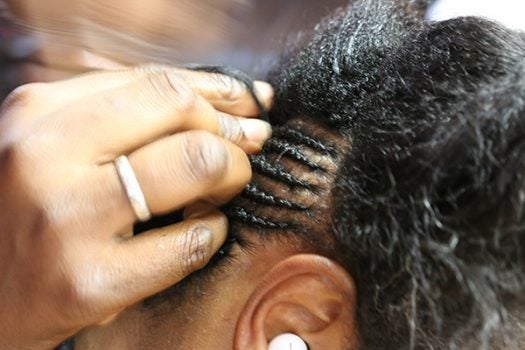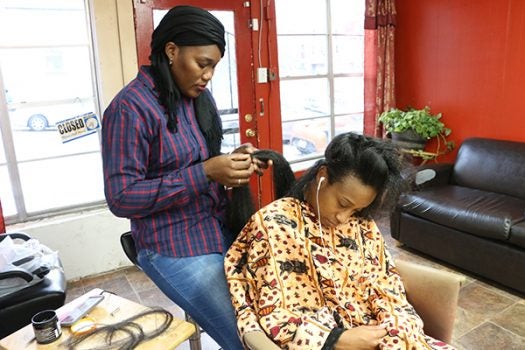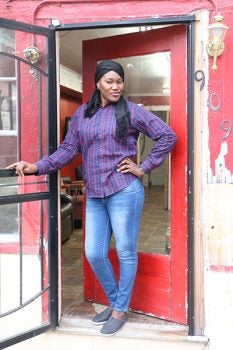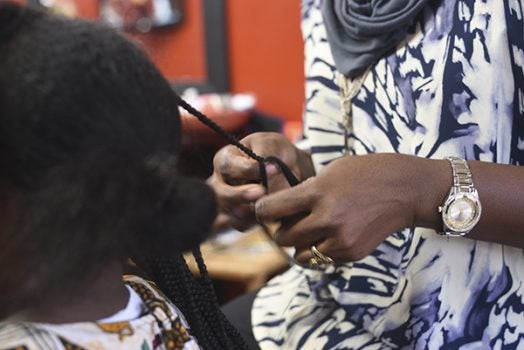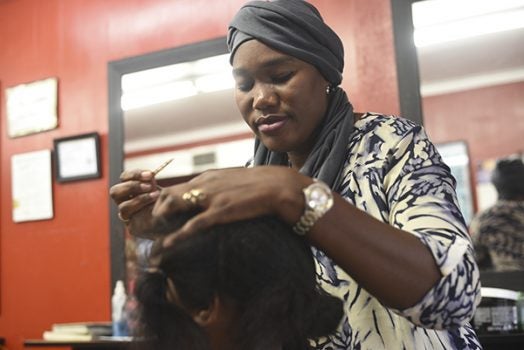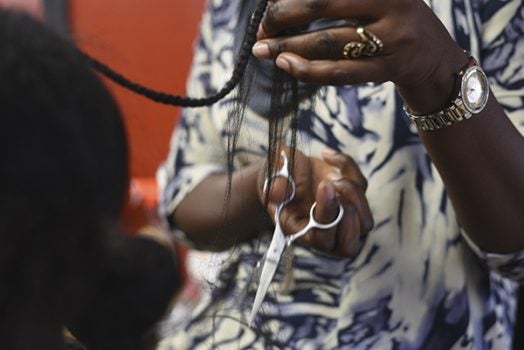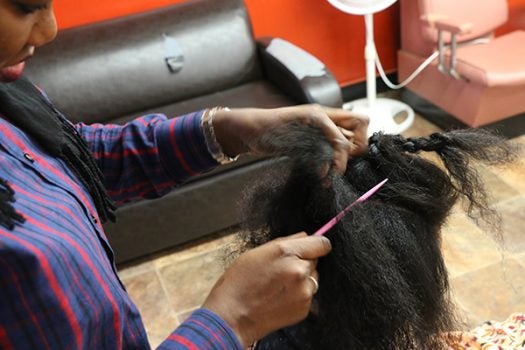HAIR BRAIDS: Fatu Dia brings her art form from Africa to Vicksburg
Published 1:49 pm Friday, February 1, 2019
Hair braids can convey a form of art that is as unique as the individual wearing them. And what began thousands of years ago. Hair braiding can also serve as a way to connect with one’s heritage. Born and raised in Africa, Fatu Dia learned to braid hair when she was 15 years old.
“When I saw my cousins, I wanted to do it,” Fatu said.
The local business owner said braiding did not come easy to her at first, but eventually she learned to master the art form. She even received a diploma in hair braiding from a college in her native country of Senegal, so she could braid hair for a living.
Located on Clay Street, Fatu said, she offers all types of hair braiding at her shop, African Hair Braiding by Fatu, including the Senegalese twist, boxed braids, cornrow braids and goddess braids.
According to birdie.com, hair braiding can be dated back to 3500 BC, and in Africa it began with the Himba people of Namibia.
As part of tribal customs, hair braiding was a way to indicate a person’s community, age, marital status, wealth, power, social position, and religion.
Fatu, who first came to the states to visit family, but after meeting and marrying her husband, Ahaad Dia, now resides in Vicksburg, concurred.
Hair braiding used to represent a person’s cultural background. However, due to the Internet and social media, she said, “Everything is mixed up,” implying cultures now cross over when they see a hair braiding style they like.
Fatu said professionally braided hairstyles can last up to 3 1/2 months, and the length of time it takes to braid depends the style.
Some hair braids can take upward of seven hours to create, and the cost depends on the time and “the size of the person’s head,” Fatu said.
To maintain hair braids, customers usually buy oil sheen. Fatu said it helpa maintain moisture in the hair and scalp.
And when sleeping, it is good to tie the braids up on top of your head and cover them with a silk scarf.
“When you tie it up at night, it (your hair) won’t bother you,” Fatu said.
Shandale Goodman, who has gone to Fatu to have her hair braided said, “I choose to get my hair braided for the convenience of not having to comb my hair. It’s low maintenance, and if I chose to wear a wig, which I do a lot, all I have to do is just put it on,” Goodman said.
And whether using one’s own hair or braiding in synthetic hair, Fatu said braiding is a healthy way to maintain your hair.
“It helps hair grow and even white people get their hair braided because it helps it grow,” she said.
Although healthy, Goodman admitted that getting your hair braided could be a little agonizing depending on one’s tolerance.
“I can remember as a child having my hair pulled, snatched, and jerked by my grandmother. I never understood as a child why I would be put through such torture until I had children of my own and then realized how suitable it was for me, especially being a working mom,” Goodman said.
She added Fatu has a very gentle touch when braiding hair — no snatching or pulling going on.
Types of braids
Sectioning the hair and braiding it flat to the scalp makes cornrow braids. This type of braiding dates back to 500 BC according to csdt.rpi.edu, and Fatu said, “Cornrow braids don’t take a lot of time to do.”
Much like cornrow braids, goddess braids, which, Fatu said, are her favorite to do, are thicker versions of cornrows and are done by under braiding.
Box braids, which also originated thousands of years ago, are individual plaits that are usually divided by small squared off parts or boxes.
According to ebony.com, American singer/actress and dancer Janet Jackson revived the box-braided hairstyle when she wore them in the 1993 film “Poetic Justice.”
The Senegalese twist is a style from Senegal, Fatu said.
“You part the hair and split in the middle and grab both ends of the hair then twist all the way down,” she said.
History
In addition to Africa, many other cultures wore hair braids including people from Asia, the Americas, Egypt and Europe.
However, it would be remiss to exclude the impact slavery had on African women and their braids.
In an article posted on essence.com and written by Siraad Dirshe on June 27, 2018, Dirshe writes that before those captured were brought onto the slave ships, traffickers shaved their heads in an attempt to strip them not only of their humanity but also of their culture.
Assistant professor at Brooklyn College, Dr. Zinga A. Fraser, who is cited in Dirshe’s article, wrote, “Colonizers recognized the significance of the elaborate strands and sought to take away the women’s lifeline to their homeland.”
Fraser went on to say, “And while these women endured the rigors of slavery in America, braids then became more functional,” therefore women wore their hair in simpler braided fashions which were easier to manage.
And in lieu of oil sheen that is now used to condition one’s hair and head, slave women had to use whatever oils were on hand, which included kerosene.
In Dirseh’s article, Lori L. Tharps, an associate professor at Temple University and co-author of “Hair Story: Untangling the Roots of Black Hair in America,” said, braids also served as a means for slaves to communicate.
“They became a secret messaging system for slaves to communicate with one another underneath their masters’ noses. People would use braids as a map to freedom. For instance, the number of plaits worn could indicate how many roads people needed to walk or where to meet someone to escape bondage,” Tharps said.
However, after Emancipation took place in 1865, a cultural shift occurred and wearing braids began to decline.
“African American women began to leave all things reminiscent of that horrific time behind them and in a desire to assimilate, began wearing straight styles,” Dirshe wrote.
However, there has been a price to pay. Using chemicals on African American hair can be unhealthy, Fatu said.
“Since they came to America, using all these chemicals, their scalps became damaged and (their hair) began to have thin edges,” she said.
Which is why Fatu said she only does hair braiding.
Goodman, who does not know how to braid hair, said her 19-year-old daughter does.
“And I am amazed at how artistic she is,” Goodman said
While some braid their own hair, many, especially those who cannot braid or who want more elaborate styles, will seek out a professional.
“Hair braiding has been modernized to fit the desires and personalities of others and there’s a lot of attentiveness and commitment that goes into braiding hair professionally or not,” Goodman said.
“I have several friends and family members that don’t own or work at a beauty salon that are talented. It’s an art form and everyone can’t do it,” Goodman said.
“I love doing hair,” Fatu said, and when some customers say, ‘Do whatever you feel like,’ then it (braiding) feels like it becomes art,” she said, adding, “When I do hair I have no stress. I feel happy and know I will be fine.”


